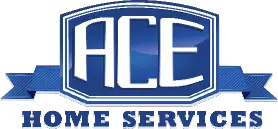It’s always a problem when something goes wrong in your home, but few things are as absolutely devastating as a plumbing catastrophe. To help avoid that disaster, this time on the ACE Home Services blog, we want to look at eight different preventative plumbing tips to keep your system working right, all year. Implement these in your routine home maintenance and you will be happier for it!
Eight Tips for Your Home Plumbing Maintenance – Prevention Beats Repair
Fix Leaky Fixtures
Faucets, shower heads, toilets – you name it. If a fixture is leaking you need to fix it ASAP. The slow drip of water, even if silent, can lead to gallons of wasted water, raise your water bill unnecessarily, and any leak left unchecked can get worse! That’s a real problem right there.
Unclog Slow Drains
Pay attention to your drains in case they begin to drain slowly. Often a clog in the line will develop overtime, first slowing the flow before outright cutting it off. To prevent that, unclog your slow drains and use a routine homemade drain cleaner mixture of vinegar and hot water to break up and flush any clogs developing.
Inspect for Leaks
Do a routine inspection of all exposed pipes, appliances, and fixtures for leaks. Your refrigerator, your washing machines, all the different pieces that connect to your plumbing. Look for visible signs of leaks in pipes that aren’t exposed such as spots on the ceiling, or pooling water. Again, the sooner they are spotted, the faster they are fixed.
Know What You Pour
This is a preventative step through and through. Knowing what you are pouring down your drains (and whether you even should) will save you so much headache. Nothing but toilet paper and human waste should go down the toilet. Sink drains shouldn’t have coffee grounds, or egg shells, and greases poured down them. You may think ‘I have a garbage disposal, it’s fine!’ but if you’re not careful that grease can bind to the smaller particles of debris and create clogs.
Watch Water Pressure
If you notice any weird flux in your water pressure (how hard/fast the water is coming out) it’s a good bet there is something fishy afoot. You can also install a water pressure regulator to ensure the water pressure stays at the preferred, safe level.
Clean Your Shower Heads
Speaking of water pressure, if your shower isn’t packing quite the punch it used to, it is probably time to clean up your shower head. These accumulate sediment through use and it will eventually cause problems with your flow. Remove your shower head and give it a good cleaning, removing the built up sediment, freeing your flow, and getting your morning showers back on track.
Know Your Lines!
Know where your water lines are in your property and how they connect with the sewer system. When you have those scoped out, you’ll know ahead of time if planting a tree in a certain spot could have implications for your water lines, or if the vigorously growing shrub might bust through and clog a line.
Maintain your Water Heater
Maintaining your water heater is huge to proper plumbing health and preventing problems. We’ve talked about it at length elsewhere so here’s some good reading on maintaining gas water heaters and answering ‘Why is my hot water heater leaking?’
Putting these 8 tips into practice will help keep your plumbing running well in Phoenix and spot any problems before they get out of hand. Having plumbing trouble already? No worries, it happens. Give ACE Home Services a call and we can get your plumbing running right, then you can worry about regular preventative maintenance.
